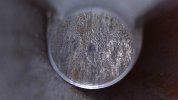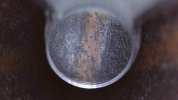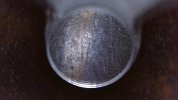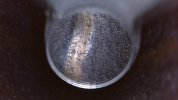Found this on the Vintage Gun Journal website
@cajunchefray
This is exactly the recipe I have used previously before I got a bit lazy as of late. (I’ve had good luck with Timberluxe when trying to avoid making finishes).
Stock Oil
Put the following into a pan and simmer for ten minutes, then allow to cool in the pan:
16oz Boiled Linseed Oil
*5 tsp Spirit of Turpentine (jacksonsart.com)
1 tbsp Carnuba Wax (thorne.co.uk)
2 tsp Venice Turpentine (jacksonsart.com)
*Terabine driers can be used instead of spirit of turpentine, if preferred.
Do not leave it unattended as linseed oild can combust unexpectedly!
Once cool, bottle the mixture. Keep one bottle open and one closed. The open one will become thicker in time, while the sealed one remains liquid. Use either, as and when required.
Before you start with the finishing oil, however, you need to get the colour right and get the figure to show to its best advantage. The traditional way to do this is with what gunmakers call ‘Red Oil’. It is simple to make. All you need are two ingredients: alkanet root in dried form and boiled linseed oil.
Red Oil. You can buy 100g of alkanet root, chopped and dried from thesoapkitchen.co.uk for £3.60 and linseed oil is available in any hardware store. Simply put the dried root in a jar and pour on linseed oil until it is covered, then put the lid on. Leave it , shaking daily, for six months - or longer, if you can. It will become deep blood red. When it is ready, pour off the oil, leaving the root behind, bottle the oil and you are ready to go.
When your stock is papered-up, you will need to raise the grain by wetting your hand and rubbing a light coat of water over the entire stock, then pass the heat gun over it and dry it off.Then rub it lightly with fine wet & dry paper to remove the fibres that stand up. Do this a few times. Once smooth, leave it to dry properly and then you can start your finish.
Start putting on the red oil with a piece of lint-free cloth. Rub it all over the surface, then leave it. It will be absorbed quite quickly to start with. Keep buffing it off and applying more oil over the next few days. You will see the dark veins in the figure getting darker and the background a deeper, warmer colour. When you are happy with the colour and contrast, you can let it dry for a couple of days, buff it and then you are ready to start with the finishing oil.
Apply finishing oil with a cloth - or your hand, rub it well in, and leave it to semi-dry. when it begins to feel tacky, get a cloth with some more finishing oil on it and use this to ‘rub-off’, that means you are buffing vigorously, in effect forcing the hardened oil into the grain and removing excess from the surface.
Repeat this process for as long as it takes for a finish to begin to show. It depends how absorbent the wood is, but it can take up to six weeks. Do not let an applied oil coat dry hard, if you do, you will have to cut it back, with wire wool or wet and dry, to remove any thick build-up. The trick is lots of very thin coats, building a polish into the wood, which will be beautiful and hard wearing.
The oil will naturally fill the grain, when you ‘rub off’, so you don’t need a grain sealer. Some people use them, after the red oil stage. I prefer not to. It takes longer to finish a stock this way but I think it is a better job. You will know when the grain is filled because the surface will be smooth, without any dips where the grain is open.
Once your finish is complete, leave it to cure for as long as you can. If you can leave it for a couple of months before you use it, it will be more durable. I see a lot of eager shooters take their newly oiled gun out on a rainy pheasant shoot the day after it is finished and express disappointment when it goes hazy.
To maintain the finish, just palm in, and buff off, a tiny bit of finishing oil every now and then, especially if the gun has been out in a lot of rain.









